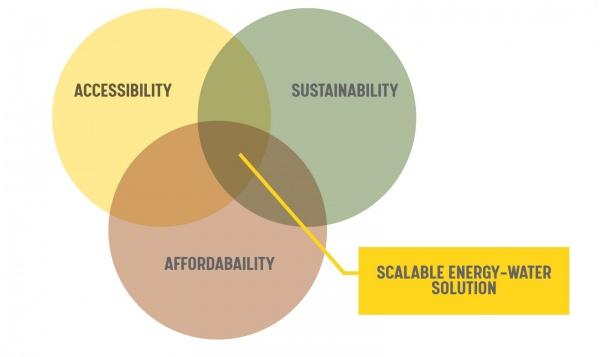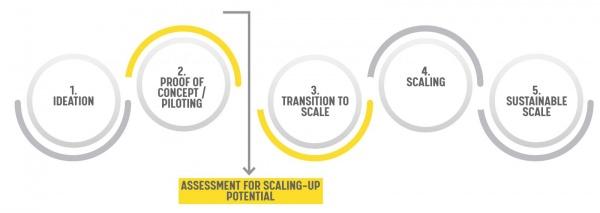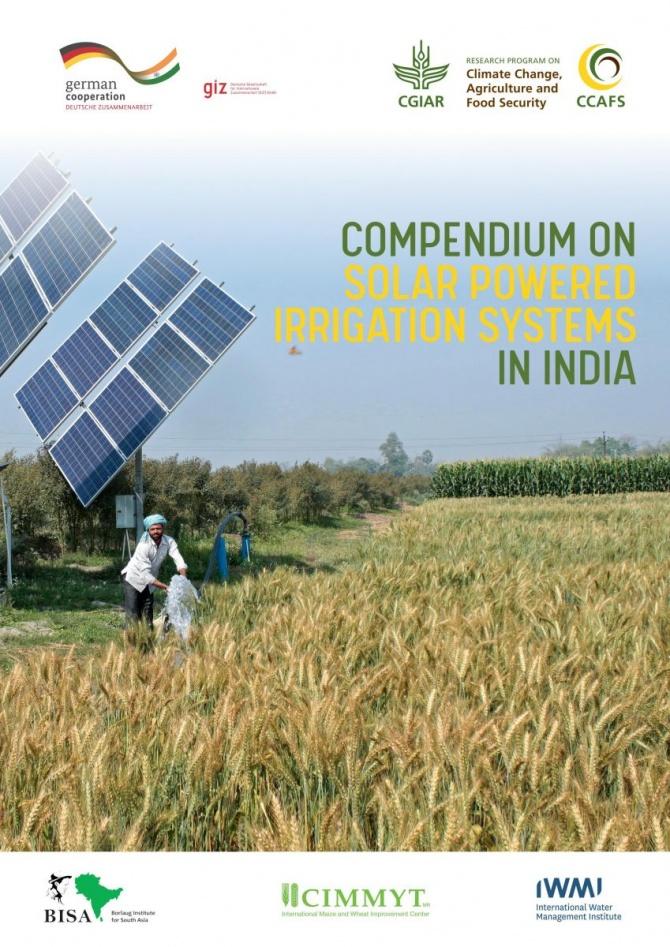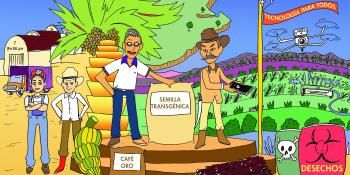Are solar powered irrigation systems scalable in India?

Climate change is a major challenge for India, as the country faces large scale climate variability and is exposed to high risk. The current development model of the country reiterates the focus on sustainable growth and aims to exploit the co-benefits of addressing climate change along with promoting economic growth. The government has been heavily emphasizing the importance of solar power in India, and therefore the Ministry of New and Renewable Energy (MNRE) launched an ambitious initiative to further this cause. The initiative, called the Pradhan Mantri-Kisan Urja Suraksha evam Utthaan Mahabhiyan (PM-KUSUM) scheme, aims to support the installation of off-grid solar pumps in rural areas, and reduce dependence on the grid in grid-connected areas.
Read the full article here |
However, there has been a knowledge gap about the potential usage of solar energy interventions in the context of climate change and their scalability. As an effort to bridge this gap, scientists from the CGIAR Research Program on Climate Change, Agriculture and Food Security (CCAFS) have comprehensively synthesized existing pilot initiatives on the deployment of solar powered irrigation systems (SPIS) across different agro-climatic zones in India and tried to assess their aspect of scalability. This in turn led to the identification of efficient and effective models for sustainable development in accordance with the socio-economic, and geo-political situation of the region.
Compendium on Solar Powered Irrigation Systems in India
The compendium was developed as part of the research carried out by CCAFS, in collaboration with the Deutsche Gesellschaft für Internationale Zusammenarbeit GmbH (GIZ), International Water Management Institute (IWMI), The Borlaug Institute for South Asia (BISA) and the International Maize and Wheat Improvement Center (CIMMYT).
The main objectives to bring forth this compendium are: to document qualitatively various deployment models of SPIS and to understand the factors impacting the scalability of SPIS in India. The authors collected detailed information about the process of installing SPIS, their usage and maintenance, and documented the different approaches in the form of case studies, developed through primary and secondary research.
In total 16 case studies from across the states of India were documented (one case for centralized SPIS, two distributed SPIS and thirteen examples for decentralized systems). The authors aimed to capture the key technical, social, institutional and financial attributes of the deployment approaches in the cases to enable comparative analysis and synthesis.
The 16 cases presented in the compendium were designed by their respective organizations (who are implementing and promoting this model) with different objectives. However, the detailed analysis of the objectives of the SPIS deployment approaches reveals that the cases revolve around the improvement of the three factors: accessibility, affordability and sustainability, the trinity against which all cases have been described (figure 1). Grid-connected areas such as Gujarat and Maharashtra offer an immense scope of selling surplus energy being produced by SPIS, to energy-deficient electricity suppliers while areas such as Bihar and Jharkhand offer the potential for scaling the decentralized model of SPIS.

Figure 1: Trinity of scalable solar powered irrigation systems
Assessing the scalability of SPIS deployment approaches
For inclusive and sustainable growth, it is important to consider the farm level potential of solar energy use with multiple usages of energy. The compendium documents examples of the potential of solar irrigation systems in India for adaptation and mitigation benefits. It also dwells on the scalability aspect of different deployment approaches such as Portability in Solar Irrigation Pumps via Women SHGs Renting Out Portable SPIS to Improve Access to Irrigation in Betul, Madhya Pradesh or Solar Pump Fitted Boats in Samastipur, Bihar or the Decentralised Solar Powered Irrigation System in Bihar, Gujrat and West Bengal. The compendium tries to understand if these initiatives are scalable and could reduce/replace fossil fuel dependence in agriculture via studying the five key stages (figure 2) which are core to the scaling-up process.

Figure 2: Five key stages to the scaling-up process
While some of the documented cases are designed exclusively to address a very specific problem in a particular context (such as the Pisciculture model in Bihar where fish cultivation is being done with the help of SPIS), others are primarily designed as a proof-of-concept for wider applicability and policy implications (such as Solar Cooperative Model of Dhundi, where community-led groups are managing SPIS)—with or without suitable modifications at the time of scaling. In this compendium, both types of cases are included and assessed for understanding their relevance and the potential contribution they can make in advancing the goal of solarizing irrigation and agriculture in a sustainable yet effective way.
The compendium concludes that all the cases have different technical, financial, and institutional aspects which are complementing each other, have been designed based on the needs of the community and are in line with the larger objective of the intervention integrating the three aspects—accessibility, affordability and sustainability—to ensure secured availability of resources and to facilitate scalability. Each model has demonstrated its strengths and weaknesses which offers a set of opportunities and threats. Given that India is a diverse country with varied socio-economic, geo-political conditions, it is important to have guidelines that lay out a plan for scaling, while allowing agencies to adapt the SPIS model based on the grassroots level situations and field realities.





